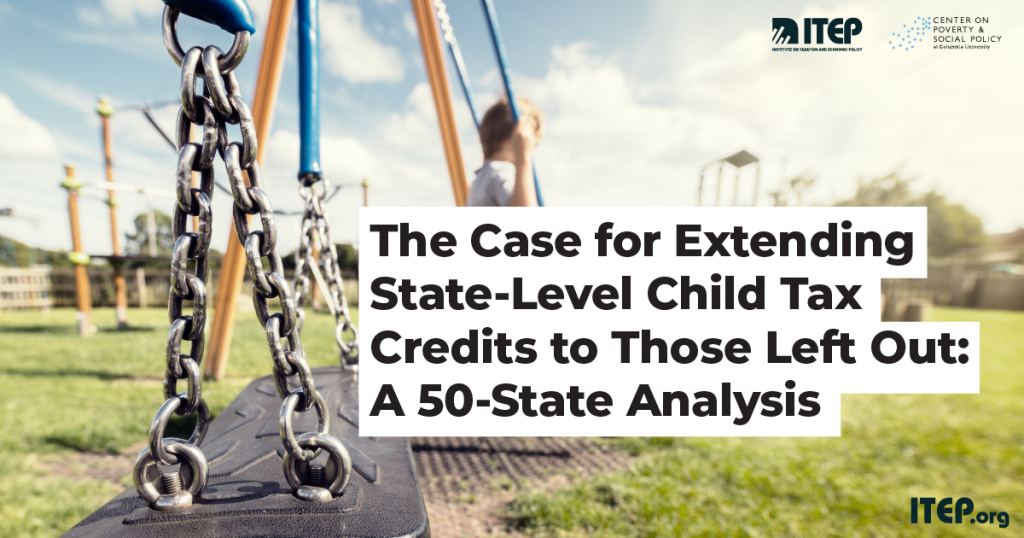In a new 50-state analysis, ITEP and the Center on Poverty & Social Policy at Columbia University teamed up to explain how state-level Child Tax Credits (CTCs) could lift between 2.1 and 4.5 million children out of poverty. The report outlines options that would help families who received little to no benefit from the expansion of the federal CTC included in the 2017 Tax Cuts and Jobs Act.
The report, The Case for Extending State-Level Child Tax Credits to Those Left Out: A 50-State Analysis, outlines two bold options for creating or expanding state-level CTCs that would:
- Ensure that every low- and moderate- income child benefit from the full $2,000 federal credit, or
- Bring qualifying children six and under to a $3,600 credit and older children to $3,000.
Option 1 allows states to piggyback on the existing federal CTC. In practice, all families currently not receiving the full $2,000 per otherwise eligible child under the federal CTC—except for those whose earnings are too high to receive the credit—would receive a state-level credit that would bring their combined state and federal credits to a full $2,000 per child. For example, families who are currently limited to receiving a federal credit of $1,400 per child would receive an additional $600 state credit.
Option 2 builds on option 1 by also increasing the total combined federal and state credit to $3,600 for children under age six and to $3,000 for older children. For purposes of this analysis, we maintain the federal CTC phase out levels that existed until the recently passed Tax Cuts and Jobs Act. For example, a family earning $50,000 with two children ages five and eight currently receives a federal CTC of $4,000 ($2,000 per child). This family would not qualify for a state-level credit under Option 1. Under Option 2, the family would receive a state-level credit of $2,600 (a boost of $1,600 for their child under 6 and a $1,000 boost for the older child).
Both options address shortcomings in the current federal CTC, including its earnings requirement, phase-in schedule and lack of full refundability. Together, these design flaws prevent one-third of all children from receiving the full federal credit. In essence, Congress has decided that those children live in families who are too poor to merit receiving the full CTC.
While some federal lawmakers have recently introduced promising legislation to address these issues, state lawmakers do not need to wait for congressional action to remedy this problem. Both options examined in this report would greatly reduce child poverty and help ensure that the CTC is effective at reducing child poverty within families of all races and ethnicities. Under current federal law, white children have been more likely than children of color to see their families lifted out of poverty by the federal CTC.
Moreover, the options explored in this report would also provide broader benefits even to families not living in poverty and would help address states’ upside-down tax systems, which take a greater share of income from low- and moderate-income families than from the wealthy.
Both options would also be fully refundable, meaning that families whose credits exceed their income tax bills would still be eligible to benefit. Refundability is a vital feature in low-income credits since these families may pay little in personal income tax but nonetheless pay substantial sums in payroll taxes, sales taxes, excise taxes, and even property taxes.
A refundable Child Tax Credit expansion along the lines explored in this report would go a long way toward providing some measure of financial stability to families struggling to make ends meet and would have a deeply meaningful impact on these children’s lives for years to come.
Read the report: The Case for Extending State-Level Child Tax Credits to Those Left Out: A 50-State Analysis





